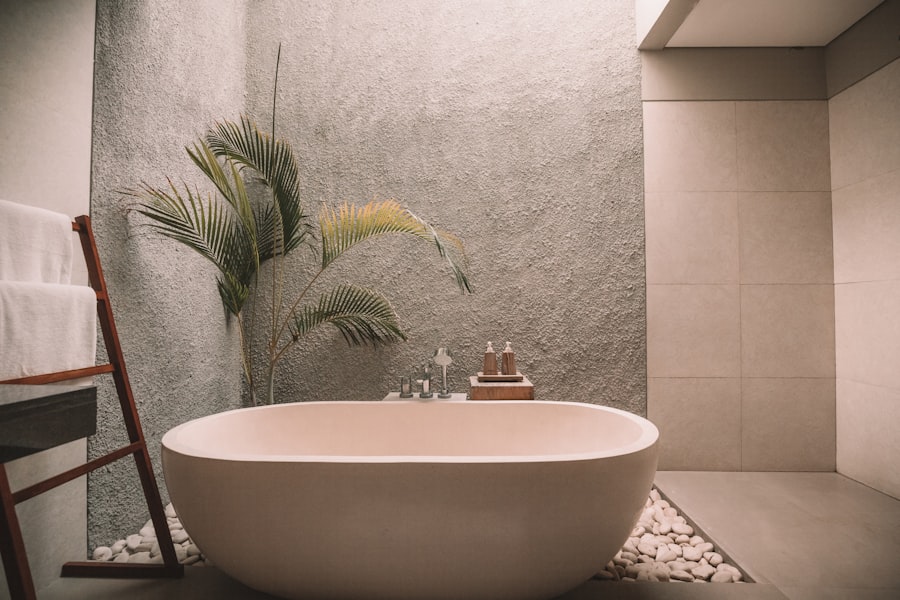Luxury mansion architecture represents the pinnacle of residential design, characterized by opulence, sophistication, and a meticulous attention to detail. These grand structures often serve as a reflection of the owner’s wealth and status, showcasing not only architectural prowess but also personal taste. The design of luxury mansions is influenced by various factors, including cultural heritage, geographical location, and the latest trends in architecture and interior design.
From sprawling estates in the Hamptons to modern villas in Beverly Hills, each mansion tells a unique story through its design elements and spatial organization. The architectural styles of luxury mansions can vary widely, ranging from classical influences such as Neoclassical and Mediterranean to contemporary designs that embrace minimalism and innovative materials. The choice of style often reflects the owner’s preferences and the surrounding environment.
For instance, a mansion in a coastal area may adopt a more relaxed aesthetic with large windows and open spaces to maximize views and natural light, while a mountain retreat might incorporate rustic elements that harmonize with the natural landscape. Regardless of style, luxury mansions are typically designed with an emphasis on grandeur, featuring expansive floor plans, high ceilings, and intricate detailing that elevate the living experience.
Key Takeaways
- Luxury mansion architecture focuses on creating grand and opulent living spaces with high-end design and materials.
- Sustainable design and green building practices are integrated into luxury mansion architecture to minimize environmental impact and maximize energy efficiency.
- Smart home technology is seamlessly integrated into luxury mansion architecture to provide convenience, security, and energy efficiency.
- Outdoor living spaces are emphasized in luxury mansion architecture to create a seamless connection between indoor and outdoor living.
- Wellness and spa features are incorporated into luxury mansion architecture to provide residents with a luxurious and relaxing lifestyle.
Sustainable Design and Green Building Practices
In recent years, there has been a significant shift towards sustainable design in luxury mansion architecture. Homeowners are increasingly aware of their environmental impact and are seeking ways to incorporate green building practices into their residences. This trend is not merely a passing fad; it reflects a growing commitment to sustainability that resonates with affluent buyers who wish to invest in properties that align with their values.
Sustainable design in luxury mansions often includes features such as energy-efficient systems, sustainable materials, and innovative water management solutions. One prominent example of sustainable luxury architecture is the use of solar panels and green roofs. Solar panels can significantly reduce energy costs while providing a renewable energy source for the home.
Green roofs, which are covered with vegetation, not only enhance the aesthetic appeal of a mansion but also improve insulation and reduce stormwater runoff. Additionally, many luxury homes are now being built with reclaimed materials, such as reclaimed wood or recycled metal, which not only minimizes waste but also adds character and history to the structure. The integration of these sustainable practices not only benefits the environment but also enhances the overall value of the property.
Integration of Smart Home Technology

The integration of smart home technology has revolutionized luxury mansion architecture, allowing homeowners to control various aspects of their living environment with unprecedented ease and convenience. From automated lighting systems to advanced security features, smart technology enhances both comfort and safety in these expansive residences.
Homeowners can manage their homes remotely through smartphones or tablets, enabling them to adjust heating and cooling systems, monitor security cameras, and even control entertainment systems from anywhere in the world.
Moreover, smart home technology extends beyond mere convenience; it also contributes to energy efficiency. For instance, smart thermostats can learn a homeowner’s habits and adjust temperatures accordingly, reducing energy consumption without sacrificing comfort. Additionally, integrated systems can optimize energy use by coordinating lighting and appliance schedules based on occupancy patterns.
This level of control not only enhances the living experience but also aligns with the growing emphasis on sustainability in luxury design.
Emphasis on Outdoor Living Spaces
In luxury mansion architecture, outdoor living spaces have become an essential component of the overall design. These areas are no longer mere extensions of the indoor environment; they are thoughtfully designed spaces that enhance the lifestyle of residents. Features such as outdoor kitchens, expansive patios, infinity pools, and landscaped gardens create inviting environments for relaxation and entertainment.
The seamless transition between indoor and outdoor spaces is a hallmark of modern luxury design, allowing homeowners to fully embrace their surroundings. The design of outdoor living spaces often incorporates elements that reflect the local climate and geography. For example, in warmer regions, outdoor areas may be equipped with shaded pergolas or retractable awnings to provide comfort during hot summer days.
In contrast, mountain retreats might feature fire pits or outdoor fireplaces that encourage year-round use despite cooler temperatures. The careful consideration of these elements ensures that outdoor spaces are not only functional but also aesthetically pleasing, creating an oasis for relaxation and social gatherings.
Incorporation of Wellness and Spa Features
As wellness becomes an increasingly important aspect of modern living, luxury mansion architecture has begun to incorporate spa-like features that promote health and well-being. Homeowners are seeking spaces that allow them to unwind and rejuvenate without leaving the comfort of their own homes. This trend has led to the inclusion of dedicated wellness areas such as yoga studios, meditation rooms, and home gyms equipped with state-of-the-art fitness equipment.
In addition to fitness facilities, many luxury mansions now feature spa-inspired bathrooms complete with soaking tubs, steam showers, and saunas. These spaces are designed to create a tranquil atmosphere that encourages relaxation and self-care. High-quality materials such as natural stone, wood accents, and ambient lighting contribute to the serene environment.
Furthermore, some homeowners are opting for outdoor wellness features like hot tubs or plunge pools that provide a unique way to connect with nature while enjoying therapeutic benefits.
Use of High-End Materials and Finishes

The Significance of Materials in Luxury Architecture
Luxury mansion architecture is deeply rooted in the choice of materials, which not only define the character and quality of a home’s aesthetic appeal but also its durability and longevity. High-end materials such as natural stone, hardwoods, glass, and metals, exude sophistication and elegance, elevating the overall ambiance of a luxury mansion.
The Art of Material Selection
The careful selection of materials reflects the homeowner’s taste and ensures that the mansion stands out in terms of craftsmanship. For instance, marble countertops in kitchens and bathrooms add a touch of luxury while providing a functional surface for daily use. Similarly, custom cabinetry made from exotic woods can elevate the overall design while offering ample storage solutions.
Innovative Finishes in Contemporary Designs
In addition to traditional materials, innovative finishes such as polished concrete or textured wall coverings are gaining popularity in contemporary designs. These choices not only create visual interest but also allow for personalization that caters to individual preferences.
Multi-functional and Flexible Living Spaces
In response to changing lifestyles and evolving family dynamics, luxury mansion architecture is increasingly focused on creating multi-functional and flexible living spaces. Homeowners are looking for designs that can adapt to their needs over time, accommodating everything from family gatherings to remote work setups. This shift has led architects to rethink traditional layouts in favor of open-concept designs that promote fluidity between different areas of the home.
For example, a spacious great room may serve as both a family gathering area and an entertainment space for hosting guests. Movable partitions or sliding doors can be incorporated to create privacy when needed or open up the space for larger gatherings. Additionally, dedicated home offices have become essential in many luxury mansions, providing a quiet environment for work while still being integrated into the overall flow of the home.
This emphasis on flexibility allows homeowners to maximize their living space while catering to diverse activities.
Influence of Contemporary and Modern Architectural Styles
Contemporary and modern architectural styles have significantly influenced luxury mansion design in recent years. These styles prioritize clean lines, open spaces, and minimalistic aesthetics that create a sense of tranquility and sophistication. The use of large windows is a hallmark of modern design, allowing natural light to flood interiors while providing stunning views of the surrounding landscape.
This connection between indoor and outdoor environments is central to contemporary architecture. Furthermore, contemporary designs often embrace innovative materials such as steel and glass that challenge traditional notions of residential construction. The juxtaposition of these materials with organic elements like wood or stone creates a harmonious balance between modernity and nature.
As homeowners seek unique expressions of their personal style, architects are increasingly blending various influences—combining elements from different architectural movements—to create bespoke luxury mansions that stand out in both form and function. In summary, luxury mansion architecture is an ever-evolving field that reflects changing societal values and technological advancements. From sustainable practices to smart home integration and wellness features, these residences are designed not just for opulence but also for comfort, functionality, and environmental responsibility.
As trends continue to shift towards personalization and adaptability, luxury mansions will undoubtedly remain at the forefront of architectural innovation.
If you’re a stay-at-home mom looking to make some extra income, you may want to check out this article on 7 Easy Instagram Side Hustles for Moms. Balancing work and mom life can be challenging, but with the right strategies, it is possible to succeed. For more tips on how to manage your time effectively and make money as a stay-at-home mom, be sure to read this article on Make Money as a Stay-at-Home Mom.
FAQs
What are the top architectural trends in today’s luxury mansions?
Some of the top architectural trends in today’s luxury mansions include sustainable design, smart home technology, open floor plans, indoor-outdoor living spaces, and use of natural materials.
What is sustainable design in luxury mansions?
Sustainable design in luxury mansions involves using eco-friendly materials, energy-efficient systems, and incorporating green building practices to minimize the environmental impact of the property.
How is smart home technology incorporated into luxury mansions?
Smart home technology in luxury mansions includes features such as automated lighting, climate control, security systems, and entertainment systems that can be controlled remotely through a smartphone or other devices.
What are open floor plans in luxury mansions?
Open floor plans in luxury mansions involve removing traditional barriers between the kitchen, living room, and dining areas to create a more spacious and interconnected living space.
What are indoor-outdoor living spaces in luxury mansions?
Indoor-outdoor living spaces in luxury mansions blur the lines between the interior and exterior of the home, often featuring expansive glass walls, outdoor kitchens, and seamless transitions between indoor and outdoor areas.
How are natural materials used in luxury mansions?
Natural materials such as wood, stone, and glass are commonly used in luxury mansions to create a sense of warmth, elegance, and connection to the surrounding environment.
What other architectural trends are popular in luxury mansions?
Other popular architectural trends in luxury mansions include spa-like bathrooms, home gyms, wine cellars, and custom-designed features such as grand staircases, home theaters, and rooftop gardens.

